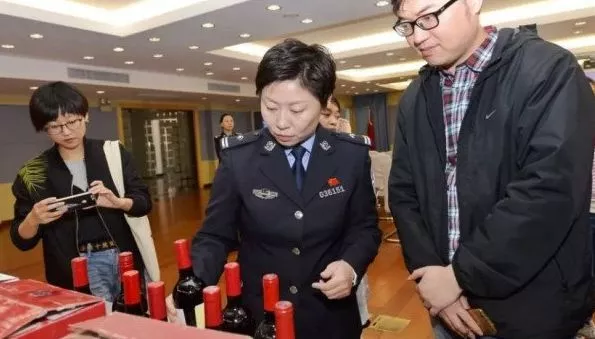Following the discovery of 14,000 bottles of fake hunger in China last November, the Australian Wine Authority admitted that it could not track the flood of Australian alcohol in China.
“We don’t have the data,” Rachel Triggs, general counsel of the Australian Wine Authority, said, “It’s hard to figure out how much (fake Australian wine).”

One solution for the YPB Group in Australia was to use a specially designed continuous QR code embedded with ProtectCode to hide the tracer, allowing wine producers to track each batch using a small handheld scanner. Every bottle of wine.
At the point of sale, any smartphone can read this QR code. The customer can enter the digital verification process as soon as they scan. If the wine is true, it will be genuine on the phone; if it is fake, the phone will display the page reported to the winery.
John Hewson founded YPB in 2011 and is now listed on the Australian Stock Exchange with a market capitalization of $11.19 million. Last August, YPB’s financial report showed a after-tax loss of A$4.3 million, but Hewson said the company has huge value-added potential, because by 2022, the global counterfeiting industry will have an output value of A$4.3 trillion.

John Hewson
John Hewson said: “Fake fraud is a very big problem. There are many criminal organizations involved, and the loss of the brand is huge. It is said that half of some wine products sold in China are fake.”
YPB has signed a contract with Australia’s largest wine producer, Accolade, and its Grant Burge winery will use ProtectCode technology.

“This is a breakthrough for YPB and is the biggest contract we have received in the wine industry, which will confirm the effectiveness of using this technology in the Chinese market,” Hewson said.
For the Australian wine industry, China’s market is expanding. According to the Australian Wine Authority’s report, Australian wine exports to China increased by 51% in the year to March 2018, with a total value of A$1.04 billion, but China’s high demand for wine has also contributed to the emergence of counterfeit Australian wines and counterfeit other Asian famous wines.
Rachel Triggs, General Counsel of the Australian Wine Authority, said: “The Chinese market is extremely important for Australian wine producers. Any behavior that may undermine consumer confidence in Australian wines has a very bad impact on the reputation of Australian wines.”
The Australian Wine Authority conducts more than 300 reviews of Australian wineries each year and implements strict export standard controls, but Chinese fake wines are beyond its jurisdiction.

Triggs also said that the Chinese brand in the Chinese market is also a problem. “Fake products are completely duplicated. But in Australia, we have seen some brands developed specifically for the Chinese market. They are very similar to the big names, and obviously want to confuse China. Consumers. These brands look very much like Australian big brands, but they are not completely similar due to copyright or trademark issues.”
Triggs said the Australian Wine Authority received weekly reports from Australian exporters about their brand being plagiarized in China. She said that QR codes are becoming more and more popular in China. Many Chinese consumers are expecting to see QR codes on their bottles. “Some anti-counterfeiting technology exporters can use them,” said Triggs. “The Australian Wine Authority will not be alone. Which one to support because they have their own strengths.


